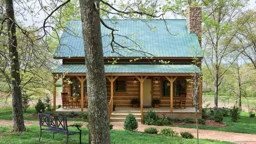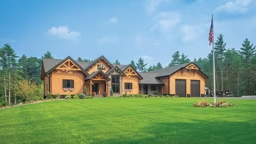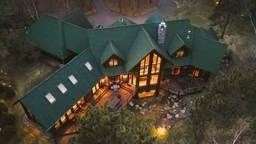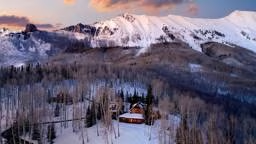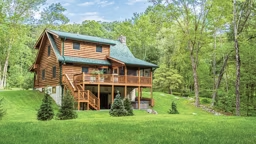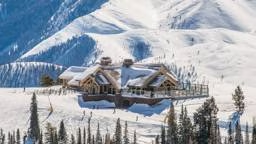
Picture this: a cabin in an autumn woodland is surrounded by a brilliant patchwork of foliage in every conceivable shade of red, brown, orange and yellow. Apricot-colored hues glow in the afternoon light. Maybe there are warm coals in the fireplace and hot cider on the stove.
This dreamy scene is the quintessential autumn day in a hardwoods forest filled with maples, beech and oaks. Trees reign supreme this time of year, yet each region transitions to winter in its own unique and wonderous way. Here’s a short guide to what you’re seeing and why.
Hard Workers
Those spectacular autumn colors that we love so much are present in tree leaves all summer, but they are hidden while the most important pigment, chlorophyll, does its job all summer long. Chlorophyll is responsible for photosynthesis; it absorbs sunlight, and then reacts with water and carbon dioxide to make the sugars that trees depend upon for food. However, as summer fades to fall and the sunlight wanes, so does a tree's ability to produce chlorophyll. As this happens, the other pigments (anthocyanins for red and carotenoids for orange and yellow) within the leaves reveal themselves … much to our delight.
Not every autumn is the same. There are years where the trees seem more enthusiastic than others. Warm days and chilly–but not freezing–nights seem to bring out the best color. Fall isn’t the only time you can sneak a glance at leaf color. In spring, just as the leaves bud out, you can see reddish colors on some maples before the trees’ chlorophyll production goes into high gear.
Hot Spots
Autumn expresses itself differently depending on the region.
If you want a classic hardwood forest, the Northeast and Great Smoky Mountains are good destinations. Check out the Adirondacks in New York, Vermont’s Green Mountains, New Hampshire’s White Mountains, and anywhere in Maine.
The Rocky Mountain States are known for rivers of yellow, thanks to the quaking aspen, flowing down evergreen mountain sides and pooling into the mountain valleys below. The contrast of dark green with the brilliant yellow makes for stunning scenery. If diversity in color is what you seek, head to Utah. The combination of canyon maples, quaking aspen and scrub oaks deliver the prized combinations of reds, oranges, yellows and browns.
Across the plains, people are treated to the softer palette of honey-colored grasses rippling in the wind, with a rich quilt of textures and colors. Pale green sage adds a distinct fragrance to the air. Montana is loaded with state and national parks serving up expansive meadows backdropped with riverbeds swathed with yellow cottonwoods, aspen and soaring peaks.
Not to be outdone, the Pacific Northwest also puts on a spectacular show: buttery yellow aspens, big leaf maples dressed in a bright lime-yellow, dogwoods, red alder, cottonwoods and western larch will treat your eyes. Northern California is filled with oak trees, some are deciduous. For a demure version of autumn color, head to wine country where the vineyards cover the hills in gold and red hues.
To increase your chances of scoring the most dazzling color, be sure to check local leaf peeping updates on when peak viewing times are expected. Plan accordingly. If you plan to rent a cabin, you may have to make reservations up to a year in advance.




